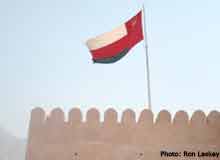"Oman offers a very wide range of tourism products, from cultural tourism, ecotourism, sun and sand tourism, adventure tourism, and there are many competitors for the different individual products," according to Edith M. Szivas, a tourism development specialist at the University of Surrey in the U.K. "Oman has an appeal as a new and exotic destination, with rich culture and heritage and an unspoiled environment. The country is also safe and has developed infrastructure. This gives Oman a competitive advantage."
Oman’s tourism strategy "is in line with the overall development strategy of the Sultanate, which [focuses] on benefiting the Omani population," Szivas notes. "Dispersing tourism development projects … will help regional development, but it must be ensured that the economic impact benefits locals and negative socio-cultural and environmental impacts are minimized."
Oman’s challenge will be to convince the more cost-conscious Asian tourist to buy into the same tourism pitch that attracted the higher-end clientele from Europe. There are signs the country may be rethinking its tourism strategy, as a number of mid-range hotels are being planned for Muscat. Lyall warns that could endanger Oman’s niche appeal.



